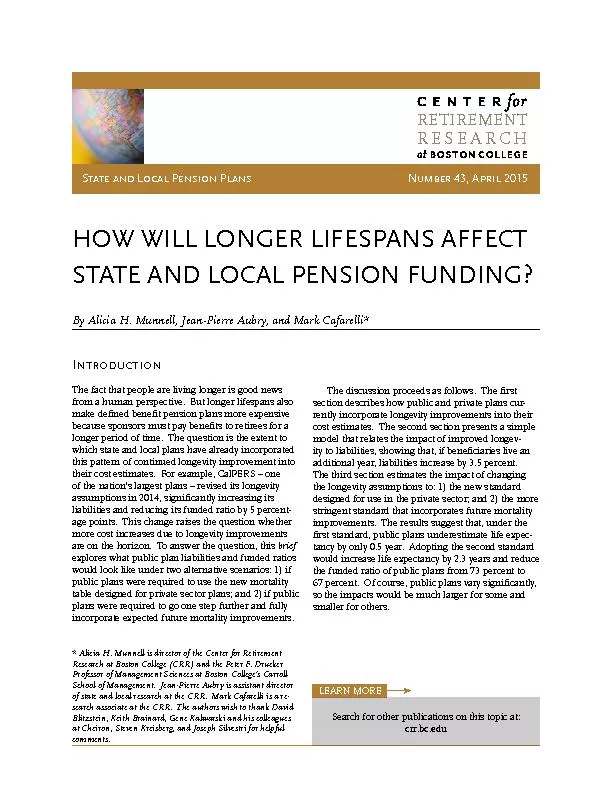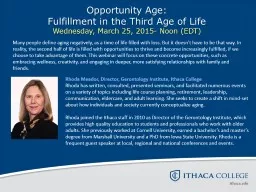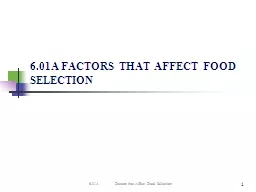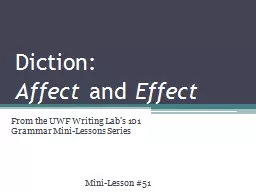PDF-HOW WILL LONGER LIFESPANS AFFECT
Author : conchita-marotz | Published Date : 2016-06-21
S L P P STATE AND LOCAL PENSION FUNDING By Alicia H Munnell JeanPierre Aubry and Mark Cafarelli Alicia H Munnell is director of the Center for Retire
Presentation Embed Code
Download Presentation
Download Presentation The PPT/PDF document "HOW WILL LONGER LIFESPANS AFFECT" is the property of its rightful owner. Permission is granted to download and print the materials on this website for personal, non-commercial use only, and to display it on your personal computer provided you do not modify the materials and that you retain all copyright notices contained in the materials. By downloading content from our website, you accept the terms of this agreement.
HOW WILL LONGER LIFESPANS AFFECT: Transcript
Download Rules Of Document
"HOW WILL LONGER LIFESPANS AFFECT"The content belongs to its owner. You may download and print it for personal use, without modification, and keep all copyright notices. By downloading, you agree to these terms.
Related Documents














